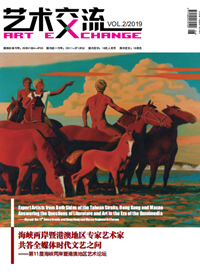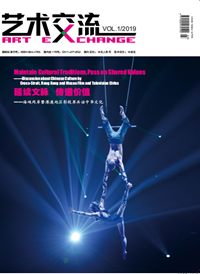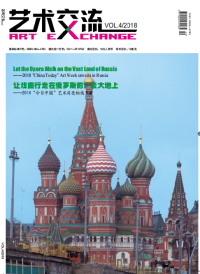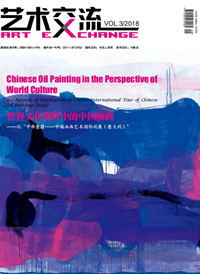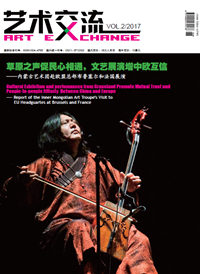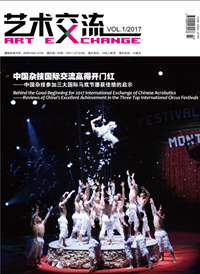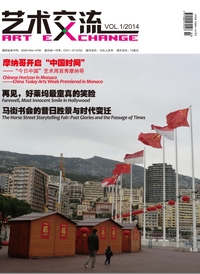A Zhongdu Imperial City, Soul of Fengyang City
Art Exchange VOL.Art Exchange|Wang Lianxia
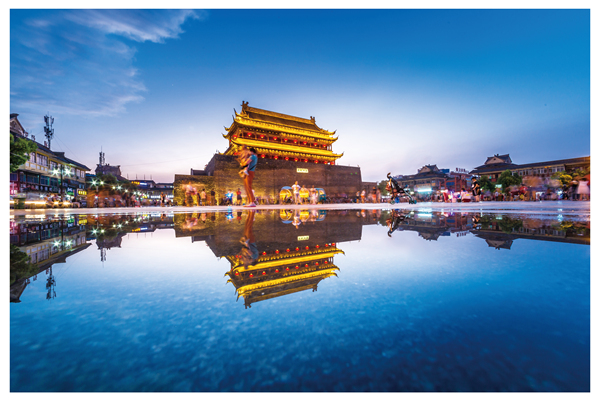
The Drum Tower after rain in Zhongdu is more beautiful. Photo by Zhu Weilin
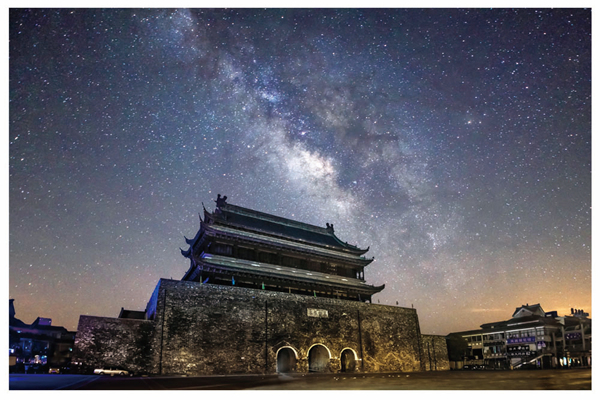
The Drum Tower At Night in Zhongdu of Ming Dynasty.Photo by Zhang Xiaoyang

The Drum Tower after Snow in Zhongdu of Ming Dynasty.Photo by Zhang Xiaoyang
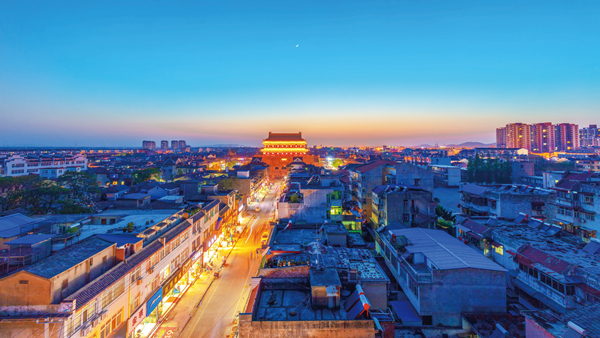
Zhongdu City of Fengyang·Drum Tower
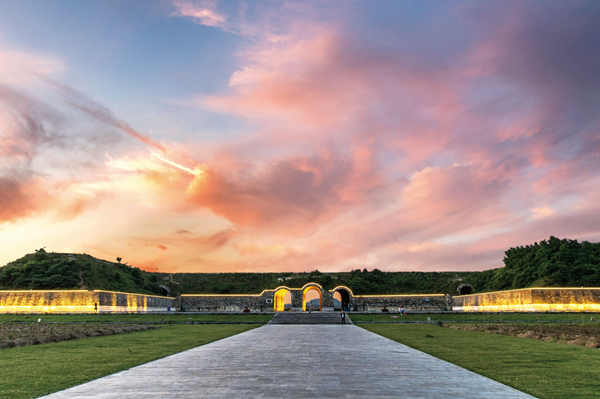
Brilliant History. Photo by Wang Yue

Drum Tower of Zhongdu against Pink Clouds. Photo by Ge Lesheng
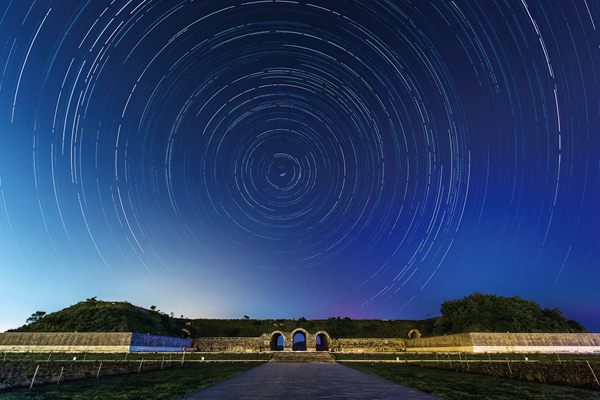
Annual Rings of History. Photo by Zhu Weilin
Phoenix tweeting auspiciously on the hill. Parasol tree growing on the hill facing the east.
Fengyang, a place used to belonging to tribes of Huaihe River in ancient China, was the State of Zhongli during the Spring and Autumn Period, earning its name as Haozhou in Sui and Tang dynasties, and Linhao in early Ming Dynasty. In the second year of Ming Hongwu (AD 1369), Zhu Yuanzhang "conquered the world and all the peoples", and built the Zhongdu imperial city in his hometown of Linhao. Located in the south of Phoenix Mountain and taking the meaning of "phoenix facing the east", he named his hometown Fengyang, it is still used today.
Fengyang is a popular city, earning its popularity due to, on one hand, its widely-sung Fengyang flower drum and, on the other hand, Xiaogang Village, the birthplace of the rural reforms, and the founding emperor Zhu Yuanzhang of the Ming Dynasty and his cradling imperial city.
The imperial city of Ming Dynasty is its first capital city under meticulous construction at his hometown, also a gathering of the merits of capital building in ancient China and a city with six-year-long constructing of national "craftsmanship skills", "extreme extravagance" and "wonderful carving". The complex follows the "Zhou Li • Kao Gong Ji", inheriting from the dynasties of Tang and Song, and the next Ming and Qing. In the 8th year of the rein of Zhu Yuanzhang, the city was "almost completed", but what was most embarrassing that Zhu Yuanzhang suddenly ceased the project due to "labor fees."
An abandoned capital city, after six hundred years of wind and rain, wars and dismantling, has long lost its original appearance and gradually faded out of people's minds. In 1969, about six hundred years later since then, Wang Jianying, who worked at the People's Education Publishing House, came to the "May Seventh" Cadre School for reform through labor run by the Ministry of Education in Fengyang. In the face of adversity, Wang did not have any mapping tools in his spare time. He began his intoxicating investigation, mapping and researching by walking and the number of wheels of a dilapidated bicycle. After six years, he accomplished "Research of Ming's Imperial City" to unveil the mystery of this capital. A critic, Ke Wenhui once commented: "Mr. Wang is one of the last bright stars of the Chinese textual research school. The examination about this ancient city was started in those dark years, which has filled the academic gap of this era and made the concept of 'Ming's Imperial City' resurrected in the minds of the scholars, providing us a complete and stereoscopic concept of the architecture, the living conditions of people, the culture of humanity and the system of rules of the ancient capital of Fengyang. This historical fact has provided a scientific basis for today's cultural heritage protection plan and will have far-reaching implications for the future."
Wang Jianying's research proves that the Ming's palace in Nanjing and the Beijing Imperial City built by Zhu Xi, which is now the Beijing Forbidden City, were built with the model of Ming's imperial city in Fengyang. However, the ancient city possessed a much higher regulation, scale and luxury than the later two capitals.
A capital city of the Ming Dynasty, drowned by historical dust, once again returned to people's vision. This is not only a heavy historical heritage, but also a valuable cultural heritage. The new round of urban planning and construction of Fengyang stems from the protection, inheritance and development of this historical and cultural heritage.
In 1982, the ancient imperial city of the Ming dynasty was listed as a national key cultural relic protection unit by the State Council. In 2013, the archaeological site park based upon such area was approved by the State Administration of Cultural Heritage, with a total planned area of 382.3 hectares, and the construction period from 2013 to 2030. In order to provide better protection of the Ming dynasty imperial city, the Party Committee of Fengyang county and the county government put forward the concept of "a Zhongdu City, the soul of Fengyang", enlisting the ruins of Huanqiu, Fangqiu, Guangxingtai and Tushanmen outside the park within the protection, making the coordinated development of urban construction and cultural relics protection, and further highlighting the central position of Zhongdu in the construction of Fengyang city.
In the layout of the city construction, Fengyang County, focusing on the Zhongdu city, has issued clear regulations regarding the new buildings, and pertinent mass, height, appearance and use properties in strict accordance with the requirements of cultural relics protection planning. The height limits are set within 9 meters, 12 meters and 24 meters respectively according to the distance from the Zhongdu, which has reduced the floor area ratio to a certain extent and limited the development of urban real estate projects. However, it has truly fulfilled the promise of "a Zhongdu City, the soul of Fengyang" and enhanced the cultural core value of Zhongdu in the construction of Fengyang City.
Before 2016, there was an administrative village in the imperial city of Zhongdu---a county town, with more than 1,200 households and nearly 30 farms, processing plants and schools. Since 2016, the Party Committee of Fengyang County and the county government have initiated two rounds of relocation. As of the end of May 2017, all residents and aquaculture enterprises in the archaeological site park have been resettled, realizing the effective isolation of the zone in the cultural relic sites. According to the planning and construction requirements of the park, the county party committee and the county government adjusted and improved the overall land use planning and the permanent basic farmland demarcation work, transferring 236 hectares of basic farmland within about 300 meters of the core area of the archaeological site park and the surrounding wall, and planning it for land of tourism, reserving sufficient space for archaeological excavation and ecological restoration of the ruins park. On this basis, more than 53 hectares of greening and beautification work outside the imperial city were completed, forming the Peony Garden, Ziwei Garden and Fragrans Garden and other garden-styled views.
The northern, eastern and western parts of Fengyang County are surrounded by the 12-kilometer Phoenix Mountains. The south side witnesses the 6-kilometer Ruyi River. The entire mountain rang is shaped like a phoenix, with tail, an individual hill, in the southeast of the county, and head part to the southwestern part of the county forming the phoenix beak. The Ruyi River is connected to the county's water system from the west to the east, like a Ruyi in the beak of the phoenix. With mountain shaping a phoenix and the water like a Ruyi, such a magical picture has formed the concept of Fengyang urban planning and construction - "Phoenix Holding Ruyi, Harmonious Integration of Mountain and Water".
Fengyang County has made a scientific plan for the main urban area of 50.9 square kilometers, turning the concept of "Phoenix Holding Ruyi, Harmonious Integration of Mountain and Water" and urban planning into a concrete blueprint, and proposed the concept of "Green the Phoenix Mountain to the North, Adjust Ruyi River to the South, Construct Zhongdu City in the Middle, Transform Shantytown to the East, Beautify New Urban Area to the East and Build the Yunji St."---To Green the Phoenix Mountain to the North is the overall construction of the Phoenix Mountain Theme Park. It allows locals to climb to the mountain tops to admire the outstanding scenery of Zhongdu city and Huaihe River flowing into the city; To adjust Ruyi River to the South is to launch the environmental protection of Ruyi River while initiating the construction of the new Ruyi city; To construct Zhongdu City in the Middle, on the basis of the to completion of the overall relocation, focuses on city protection, complete the construction of the national archaeological park of Ming's Zhongdu, and build Hongwu Park, Chengtian Rostrum, Daming Rostrum and Hongwu Rostrum, establishing a "central axis" of Fengyang City from north to south; transform Shantytown to the East is to speed up the transformation of the shanty towns in the old city, restore the ancient style, and realize the integration of the new and old city; To beautify New Urban Area to the East is to build a new city with high standards and create a beautiful Fengcheng with ecological gardens; To build the Yunji St. is to upgrade Yunji Street through renovation, build the cultural square of bell tower, witnessing the standing tower, the Yunji St. connecting the east and west with the Bell Tower and the Drum Tower echoing each other, and initiate the tourism center of Zhongdu, demonstration center of intangible culture and Yunji community cultural center, creating the central points of the Yunji Street. Through the "Three in One" Plan including urban design, historical protection planning, special and professional layout, it is devoted to fully demonstrate the historical and local characteristics of Fengyang.
Today's Fengyang is a "humanity city" suitable for touring and living. The party committee of county and the county government insist on the unified planning of historical and cultural city and the establishment of a all-for-one tourism demonstration zone, and integrate the four-color tourism section of "Golden the Zhongdu, Learning Red Spirit of Xiaogang Village, Blue Walking along Huaihe River, Green View of Fengyang", promoting the integration of urban and scenic areas, and striving to create a charming city, ecologically livable and suitable for business and tourism.
In December 2017, the ancient imperial city of Ming dynasty has been successfully selected into the third batch of national archaeological sites parks, becoming the first and only national archaeological site park in Anhui Province. In 2018, Fengyang County successfully held the home events of the Cultural and Natural Heritage Day of Anhui, marking the official unveiling of archaeological workstation of the old imperial city, becoming the first project in the province to cooperate with the Palace Museum. With the orderly advancement of the archaeological excavation of Zhongdu city, the success of the archaeological survey of Chengtian Rostrum, the re-appearance of the "SevenDragon Bridge", the site of Ming's Zhongdu was shortlisted for the "2018 National Top Ten Archaeological Discoveries" final evaluation project, releasing the "中"-shaped city LOGO. Since then, Fengyang starts to possess its unique city card. A series of events have been carried out in an in-depth manner, including "Touring Zhongdu, Reading History of Ming Dynasty", "I Cheer for Fengyang cultural relics", "painting of Fengyang by Chinese youth", "Everyone writes stores about Fengyang" amid others, exploring the old city, recognizing the new Fengyang, with the purpose of creating a unique cultural IP with characteristics of Fengyang and singing out the strongest sound of "Fengyang is a popular city".
Fengyang is a popular city. In the near future, a beautiful Fengyang, featuring unique charm of Zhongdu, will be presented to the world with a brand new attitude.
Copyright © 2011 CFLAC Corporation, All Rights Reserved



